Results 1 to 10 of 306
Thread: French Hones
Hybrid View
-
12-31-2012, 01:54 PM #1
 French Hones
French Hones
Purchased some French hones a while ago.
One is a purple stone with a beautiful structure mounted in a wooden box.
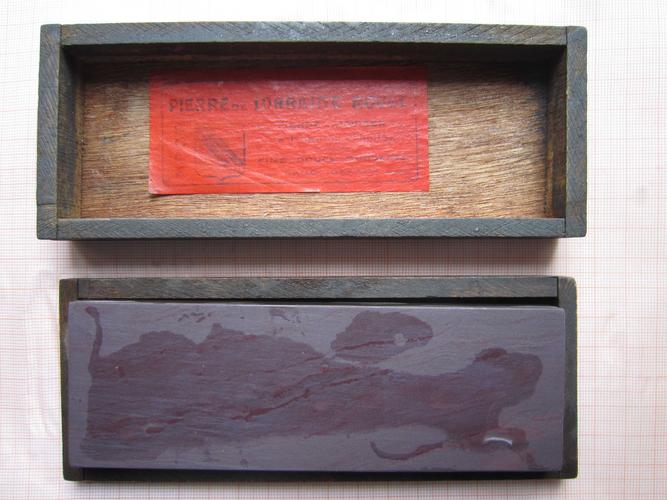
The label says “Pierre de Lorraine Rouge”. I have read somewhere in the forum that there is a coticule layer named Lorraine, but I am unsure if this is a coticule. It has purple slurry and is a fine stone.
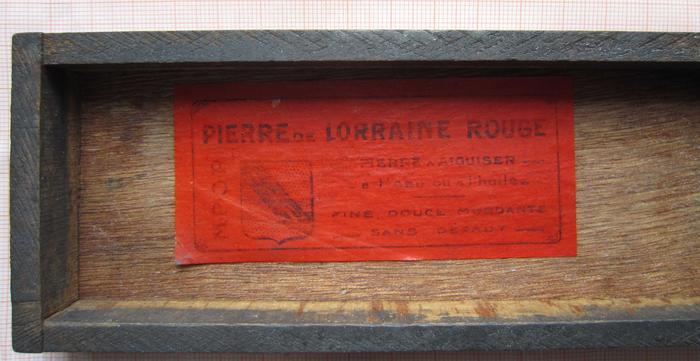
The second hone is a slate stone with a bluish grey polished shining, like metal.
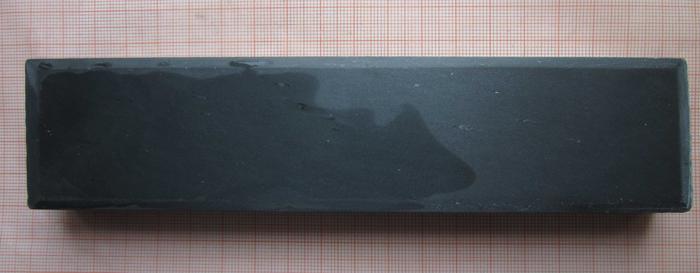
It has rough saw marks on the side that I have not seen with other stones. It is not a Thuringian and I don’t think it is a welsh slate. From what I have seen on some pictures it could be a “La Lune” -special stone for good razors- but I am not sure. It came without label. I got a comparable smaller stone in a wooden box. This one is 18x4 cm.
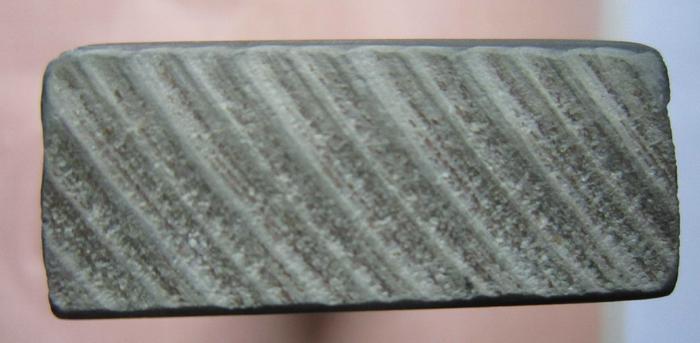
Would greatly appreciate any opinion and suggestions on the stones!
-
-
12-31-2012, 03:00 PM #2

Beautiful stones, thank you for sharing. Let us know what you think of the edges...
MIke
-
The Following User Says Thank You to MODINE For This Useful Post:
hatzicho (12-31-2012)
-
12-31-2012, 03:03 PM #3

The first one looks just like a Goldfisch Wetzstein/ Fox Razor Hone. The second one does indeed look like my Special Stone, which has similar sawmarks.
Nice finds.
-
-
12-31-2012, 03:24 PM #4Historically Inquisitive



- Join Date
- Aug 2011
- Location
- Upstate New York
- Posts
- 5,782
- Blog Entries
- 1
Thanked: 4249
The first stone "Pierre de la Lorraine Rouge" is a stone found in the Lorraine region in France not a Coticule, it is also in the Vosgienne region,
Jean- Jacques Perret, in his book "La Pogonotomie" written in 1770 talks briefly about these stone, and is conclusion is that some are suitable for razors and some are not. You will also find the stone to be a very popular scythe stone usually found with a wooden holder. According to the label it is Fine, Smooth And Bitting,and it can be used with oil or water, cant read the last line on the label.
The second stone sure does resemble the La lune special stone for razors, the saw marks and especially the shiny or sparkling on it is very common to these stones.
-
The Following 8 Users Say Thank You to Martin103 For This Useful Post:
doorsch (07-17-2014), hatzicho (12-31-2012), Neil Miller (01-03-2013), nipper (01-06-2013), randydance062449 (03-19-2015), sharptonn (11-26-2013), stimpy52 (01-01-2013), WW243 (01-01-2013)
-
12-31-2012, 04:04 PM #5aka shooter74743




- Join Date
- Sep 2009
- Location
- SE Oklahoma/NE Texas
- Posts
- 7,285
- Blog Entries
- 4
Thanked: 1936
The second one does look like my Special Stone
Southeastern Oklahoma/Northeastern Texas helper. Please don't hesitate to contact me.
Thank you and God Bless, Scott
-
The Following User Says Thank You to ScottGoodman For This Useful Post:
nipper (01-05-2015)
-
12-31-2012, 04:25 PM #6

the nr. 2 ist a "La Lune Stone" I have this Stone. very rare and expensive...so 300-500$.....He works with oil and a Siliciumcarbit Ston for mud.
-
-
12-31-2012, 04:29 PM #7

That's very interesting, thanks a lot for the comment.
I didn't know the literature you mentioned but found some remarks on the Lorraine stones in the "Traité de Mineralogie" from 1837.
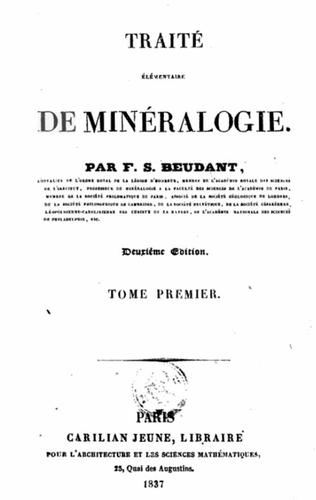
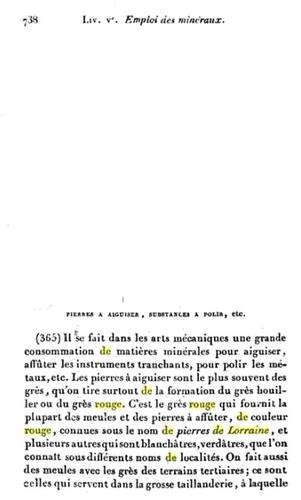
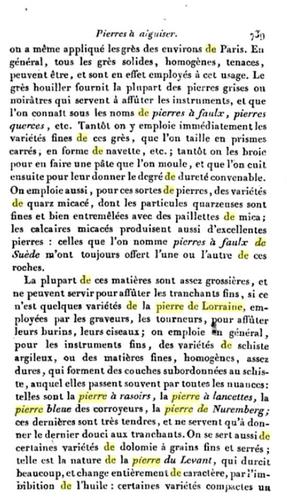
Since my french is not the best, I read it that way, that the Lorraine rouge stones are a general type of courser sandstone like stones. Anyway, this would fit to your comment about the scythe stones.
-
-
12-31-2012, 05:07 PM #8Historically Inquisitive



- Join Date
- Aug 2011
- Location
- Upstate New York
- Posts
- 5,782
- Blog Entries
- 1
Thanked: 4249
As you also noted that they talk about "Pierre a Aiguiser"= sharpening stone, and also the red sandstone is used in other application, grinded,
turned into dust and molded then cooked for different sharpening applications. The next chapter wich you dont have posted is for "pierre a Polir"
or Polishing stones. In these old french book, when they use "pierre a rasoirs" Razor stone refers to Coticule, Perret in his book got a whole chapter on Coticules and their uses and how to use them.
Did you lap and used this stone yet?
-
The Following User Says Thank You to Martin103 For This Useful Post:
Thaeris (11-09-2013)
-
12-31-2012, 05:19 PM #9

I have lapped it, but didn't hone a razor with it yet.
It is indeed a very fine stone, so I suppose it is usable for straight razor honing. To which extend, I will report as soon as I have tested it.
I will compare to my thuringians and some coarser natural stones to see, how it would fit in.
-
11-08-2013, 07:18 PM #10

The book - Jacques Perret, in his book "La Pogonotomie" speaks about a "Gres". A Gres is a sandstone!
Il se fait dans les arts mécaniques une grande consommation de maitières minérales pour aiguiser affuter les instruments tranchants, pour polir les métaux, etc. Les pierres à aiguiser sont le plus souvent des grès, quón tire surfont de la formation du grès houiller ou du grès rouge. C'ést le grès rouge qui fournit la plupart des meules et des pierres a affuter, de couleur rouge, connues sous le nom pierres de Lorraine, et plusieurs autres qui-sont blanchâtres, que l’on connait sous différents noms de localités.
-
The Following 3 Users Say Thank You to Margeja For This Useful Post:
Disburden (11-14-2013), hatzicho (11-09-2013), randydance062449 (04-27-2015)


 496Likes
496Likes LinkBack URL
LinkBack URL About LinkBacks
About LinkBacks






 Reply With Quote
Reply With Quote
